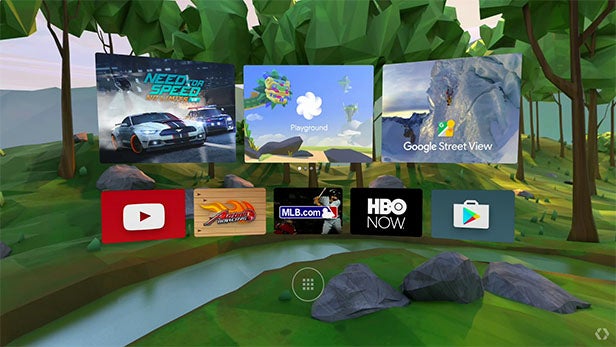Google Standalone VR Headset: What you really need to know

Everything you need to know about Google’s Standalone VR headsets
At I/O 2017, Google announced plans to launch ‘Standalone VR’ headsets that won’t require a smartphone to work, with HTC and Qualcomm confirmed as partners.
Last year, Google announced Daydream, a virtual reality platform build on the idea smartphones docking into head-mounted displays (HMDs), acting as the screen and the ‘brain’ for the headset. But it seems Google has changed its tack, and says that we’ll soon see fully wireless ‘Standalone VR’ headsets – no more phone-docking.
To bring that vision to reality, Google partnered with US chipmaker Qualcomm to develop a new Daydream VR headset that’s powered by the company’s Snapdragon 835 VR platform. That platform runs on the powerful Snapdragon 835 chipset that we’ve already seen debuted in the Samsung Galaxy S8, Sony Xperia XZ Premium, and HTC U11 smartphones.
Speaking about the announcement, Keith Kressin, Senior VP of Product Management at Qualcomm, said: “
Kressin continued: “Our companies share the same vision: to make it possible for everyone to enjoy rich and immersive VR experiences on a smartphone device or a dedicated VR head-mounts display while being fully mobile, rather than being restricted by cables or limited to predefined rooms setup for outside-in tracking.”
It’s important to note that Qualcomm won’t be selling this virtual reality headset directly to consumers. It’s simply a reference design, which means third-party companies will use the platform to build their own creations – with their own individual branding.
Qualcomm says that the first of these headsets are expected to “hit shelves later this year”, although pricing and exact release dates are still unknown. However, HTC has confirmed that it will be building a Standalone VR headset for the Daydream platform.
Google’s VP of virtual reality Clay Bavor said: “The Daydream standalone headset reference design created in close partnership with Qualcomm will enable manufacturers to build a whole new category of VR devices.”
He went on: “These headsets have everything needed for VR, built right into the headset itself and are as easy to use as picking them up. They’ll feature WorldSense for positional tracking right out of the box without any external equipment. We’re thrilled that headsets will begin to hit shelves later this year.”
We don’t have a full list of brands to support Qualcomm’s new platform just yet, but we do know that both Lenovo and HTC are developing wireless, standalone, highly portable headsets for Daydream. HTC, which already sells the super-high-end HTC Vive VR headset, confirmed the news in a blog post:
“Vive will be building one of the first standalone headsets for the Daydream platform, to come out later this year. We have been working closely with developers and consumers to define the best VR experiences over the past few years, and are perfectly positioned to deliver the most premium standalone headset and user experience.”
HTC says that the standalone headset will provide a “deeper and more immersive” portable VR experience than ever before, and that it will be simple, easy-to-use, and will have no cables to connect: “Just pick it up, put it on and be fully immersed in your new reality.”
Related: Android O
What do you think of Google’s latest VR announcement? Let us know in the comments.


